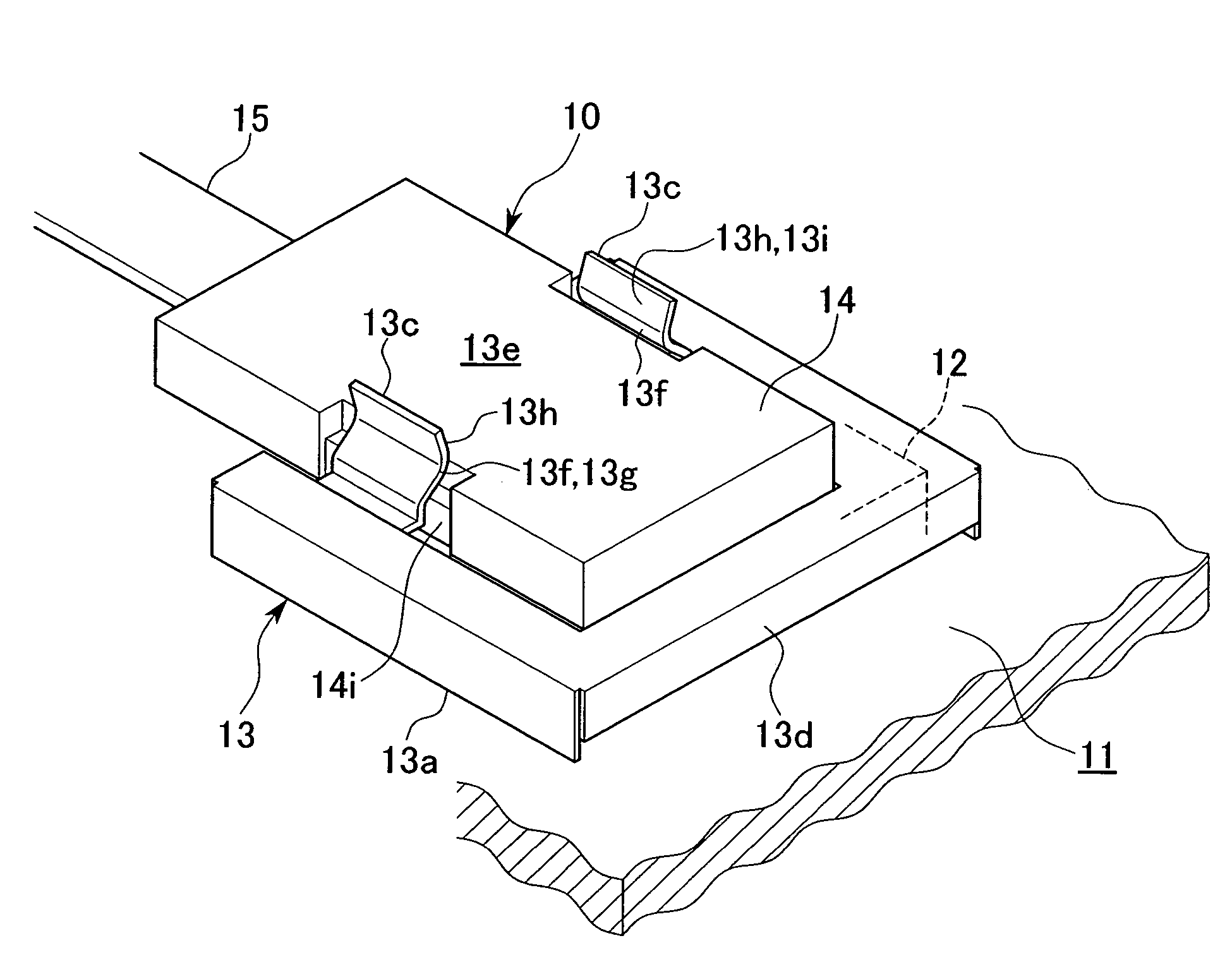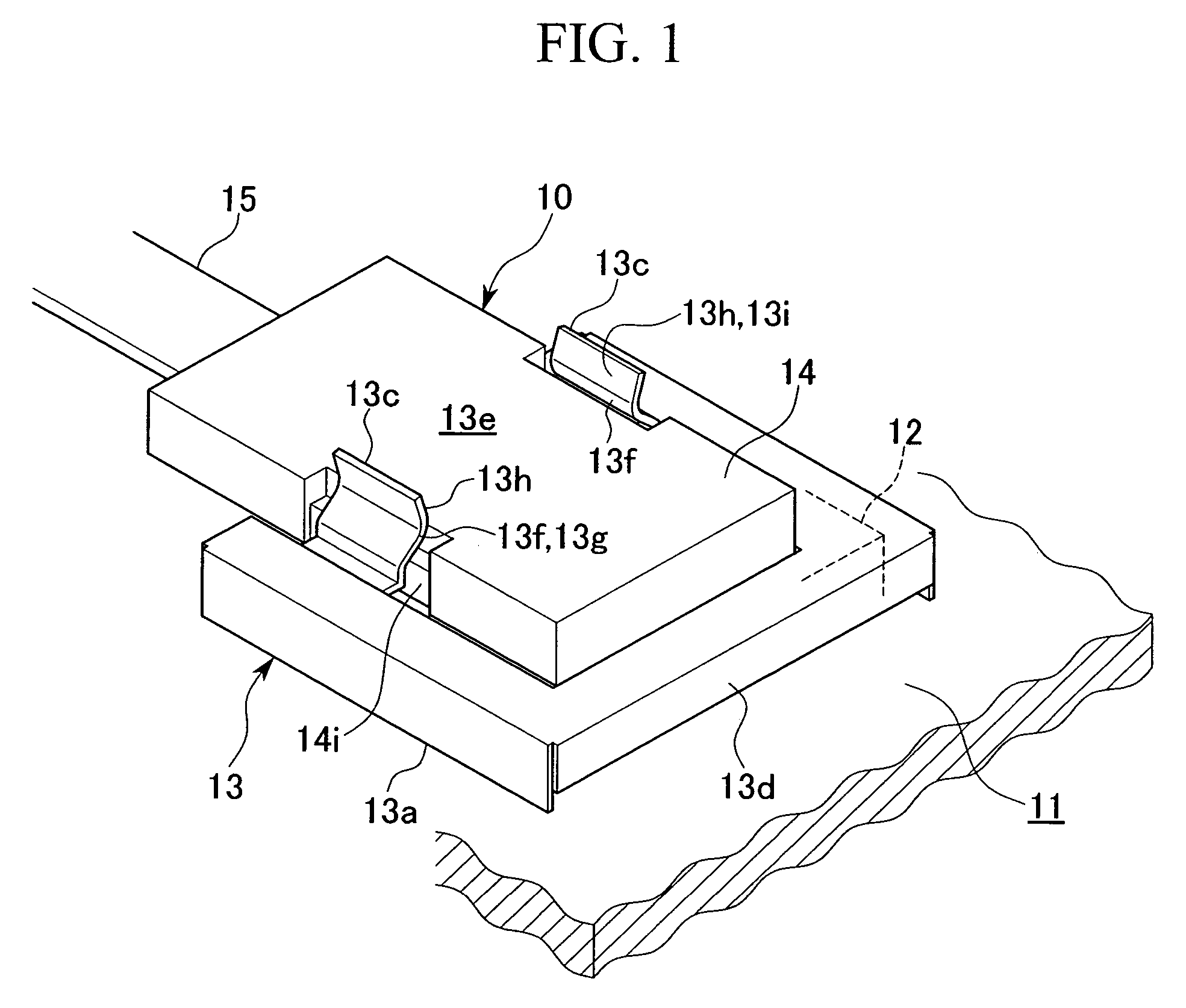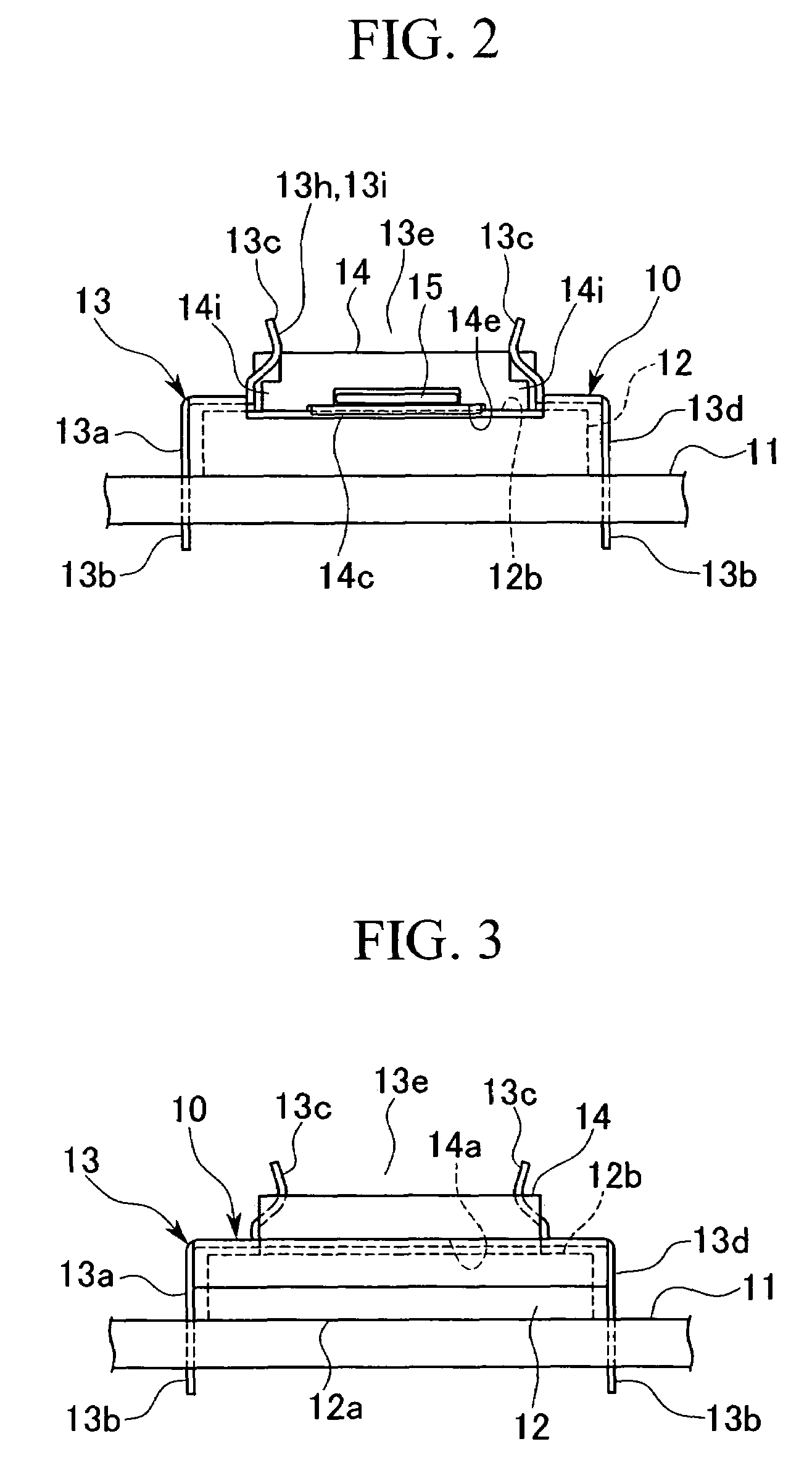Optical transceiver and optical connector
a transceiver and optical connector technology, applied in the field of optical transceivers, can solve the problems of insufficient size of optical connectors, inflexibility (freedom) of optical connection design paths and circuit boards, and inability to reduce substrate size, etc., to achieve good accuracy, reduce optical connection losses, and high accuracy
- Summary
- Abstract
- Description
- Claims
- Application Information
AI Technical Summary
Benefits of technology
Problems solved by technology
Method used
Image
Examples
embodiment 1
[0041]FIG. 1 is an overall perspective view showing the structure of an optical transceiver 10 (an optical transceiver of the type which is installed upon a substrate) according to the present invention, while FIG. 2 is a side view thereof (the side where a coated optical fiber 15 comes out), FIG. 3 is a side view of the optical transceiver of FIG. 1 from the opposite side to that of FIG. 2, and FIG. 4 is an elevational sectional view thereof.
[0042]In FIGS. 1 through 4, the reference numeral 11 denotes a circuit board (a substrate), while 12 denotes a photoelectric conversion module, 13 denotes a connector holder, 14 denotes an optical connector, and 15 denotes a coated optical fiber (core wire). Although the coated optical fiber of this embodiment is one in which a plurality of optical fibers 15a which are sheathed with plastic or the like are juxtaposed and bundled, the present invention is not limited to this.
[0043]The photoelectric conversion module 12 of this embodiment is a ch...
embodiment 2
[0082]FIG. 7 is a perspective view showing a connector main body 22 of an optical connector of the second embodiment as seen upside down, FIG. 8 is a plan view thereof, FIG. 9 is an A-A sectional view of FIG. 8, FIG. 10 is a B-B sectional view of FIG. 9, FIG. 11 is a C-C sectional view of FIG. 9, FIG. 12 is a view of a state in which a coated optical fiber ribbon has been inserted into the connector main body 22 of FIG. 8, FIG. 13 is a sectional view showing a situation in which an optical connector 21 which has been made using the above described connector main body 22 is being used, and FIG. 14 is an enlarged view of an essential portion of FIG. 13.
[0083]The optical connector 21 of this embodiment, as shown in FIGS. 13 and 14, is one for optically connecting together an optical fiber 32 which constitutes an optical path, and an optical device 25 of an optical transceiver 24 which transmits and receives optical signals. The optical transceiver 24 is mounted on a circuit board 26 wi...
PUM
 Login to View More
Login to View More Abstract
Description
Claims
Application Information
 Login to View More
Login to View More - R&D
- Intellectual Property
- Life Sciences
- Materials
- Tech Scout
- Unparalleled Data Quality
- Higher Quality Content
- 60% Fewer Hallucinations
Browse by: Latest US Patents, China's latest patents, Technical Efficacy Thesaurus, Application Domain, Technology Topic, Popular Technical Reports.
© 2025 PatSnap. All rights reserved.Legal|Privacy policy|Modern Slavery Act Transparency Statement|Sitemap|About US| Contact US: help@patsnap.com



